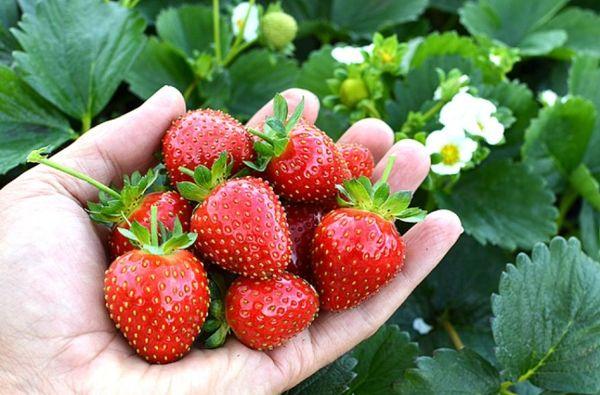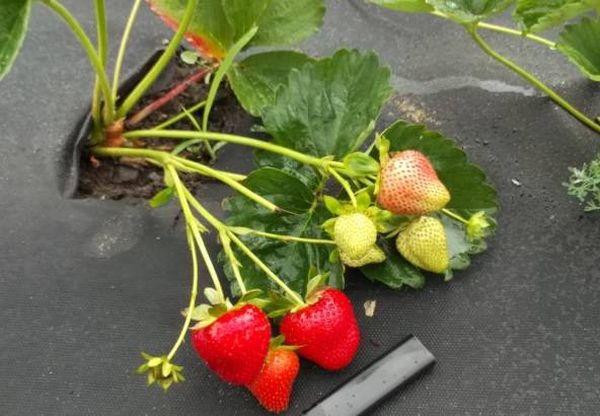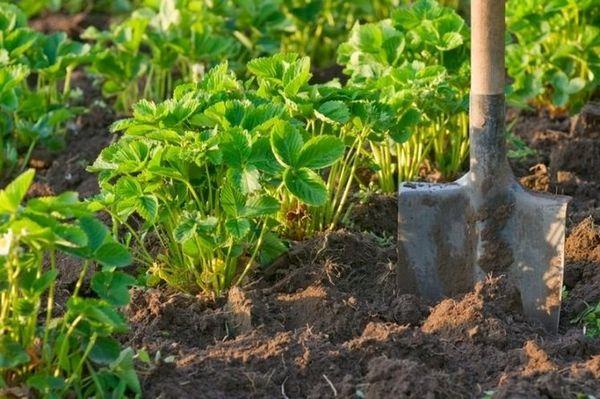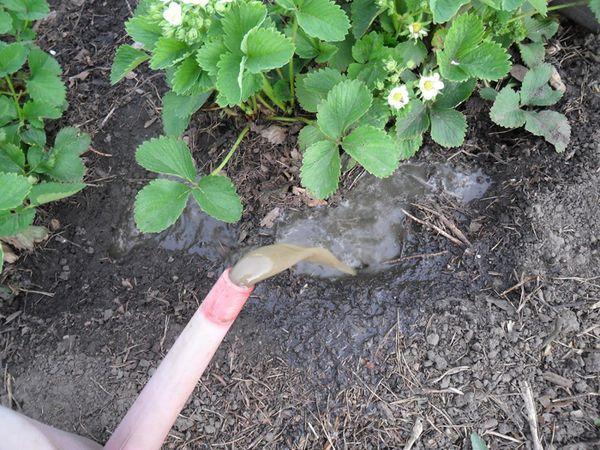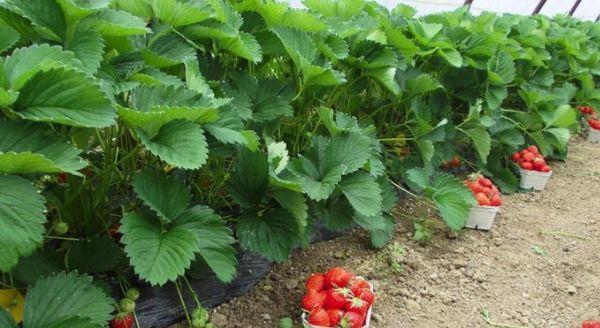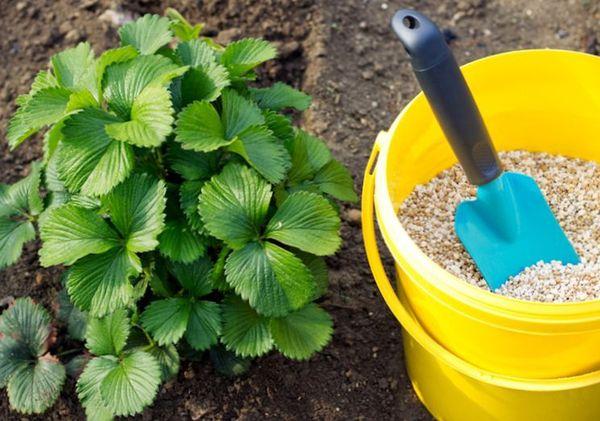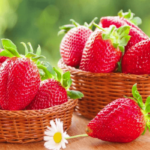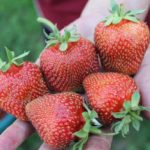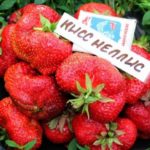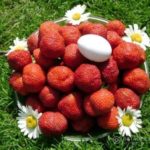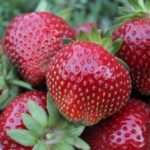Avis Delight is a new variety of strawberry. During selection, it received excellent taste qualities that attract professional and amateur gardeners from all over the world. Knowing the peculiarities of caring for a variety, you will be able to grow a healthy crop that will produce a rich harvest.
- Description of the variety
- Characteristics of the berry
- Advantages and disadvantages of strawberry Delight
- The nuances of growing a plant
- Selection and preparation of a landing site
- Preparation of planting material
- Landing rules
- Recommendations for caring for the variety
- Watering rules
- Fertilizers and fertilizers
- Mulching and loosening
- Preparing for winter
- Diseases, pests, prevention
- How to propagate the variety?
- Collection and storage of strawberries
Description of the variety
The birthplace of the berry is Great Britain, where the culture was developed in a country characterized by rain and fog. Strawberries contain a lot of sugars, which makes them several times superior to other varieties. It produces several harvests in one season, which does not negatively affect the taste of the berries, their size and aroma.
Peduncles are erect and very strong. Thanks to this, the heaviest berries, which are distinguished by their large weight, are retained.
The bushes reach a height of 30-35 cm, on which a large number of flowers with large petals are formed. Evis Delight is able to withstand winter cold, as it is resistant to low temperatures.
Characteristics of the berry
Strawberries are formed quite large in size and ripen quickly. The berries are large with a rounded conical shape. Painted bright red. The peel has a shine and is distinguished by its smoothness.
The flesh is dense and not soft. The inside of the strawberry is as red as the outside. People who have tried the variety note a rich strawberry taste. It has a strong strawberry aroma, which is much stronger than other varieties.
One bush produces from 1.5 to 2 kg of berries per season. One berry weighs on average 20-30 g. With proper care, the size of the berries increases.
Cases have been recorded when individual specimens reached 50 g.
Leaf characteristics:
- large leaf plate;
- wrinkling is weakly expressed;
- color - dark green.
Mustache formation is characterized by an average degree. But their number is not enough for mass reproduction. One bush produces only 3-4 rosettes.
Advantages and disadvantages of strawberry Delight
Among the advantages are:
- high yield;
- breeding in open ground, greenhouses and under film covers;
- large fruit;
- rapid adaptation in unsuitable climatic conditions;
- resistance to frost and sudden temperature changes.
The strawberry variety belongs to the remontant group, which allows you to harvest a good harvest in neutral daylight conditions. Gardeners, according to observations, identified two shortcomings. The first is poor resistance to diseases such as anthracnose. The second is low reproductive ability.
The nuances of growing a plant
The key to obtaining a large harvest depends on many factors. It all starts with choosing the right location. Agricultural technology plays a big role. Failure to follow the rules will not give the desired result. It is this stage that leads to receiving negative reviews.
Selection and preparation of a landing site
Strawberry bushes are located on the southwest side. The site should be level with slight upward development. Avis Delight is not grown in the northeast and lowlands. Groundwater on the site must flow at a depth of at least 0.6 m.
The hybrid needs stable daylight, so planting in dark places is not recommended. Bad areas for strawberries are the shade of spreading fruit and berry trees. The root system of trees prevents the development of strawberries.
Preparation of planting material
Strawberry rosettes, ready to be planted in a new place, are not watered for 3-5 days. Only before the procedure itself is abundant watering carried out. Saturation with moisture helps to free the socket from the container. The peat cup is planted directly in a new place without affecting the root system.
Landing rules
For 1 sq. m of land, no more than 4 bushes are planted. 0.3 m of free space is maintained between the bushes. Between rows - 0.5 m.
Rosettes ready for planting are placed in pre-dug holes and then sprinkled with soil. The final stage is to water the plant abundantly. During planting, care should be taken to ensure that the root system is not damaged. The ability to take root in a new place and the speed of growth and development depend on this part of the plant.
Recommendations for caring for the variety
It has individual nuances that must be taken into account if a person wants to get a good and stable harvest.
Watering rules
The berry variety needs regular and abundant watering. In this case, there should be no waterlogging of the soil. Irrigation rules are as follows:
- watering alternates with drip and root;
- settled water is used;
- it shouldn't be cold.
Watering increases during fruit formation. The soil is saturated with moisture daily. At the same time, make sure that there is no stagnation of water.
Fertilizers and fertilizers
In spring, the crop is fertilized with complexes containing nitrogen. In summer, the emphasis is on potassium and phosphorus. In the latter case, the substances give the plant strength to bear fruit again.
Mulching and loosening
Covering the soil with mulch reduces the frequency of watering, as well as the growth of weeds. The procedure has another important advantage - it improves the soil structure for growing strawberries. Mulch can be inorganic and organic:
- straw;
- coke shavings;
- agrofibre;
- humus;
- hay;
- needles.
When caring for strawberry beds, do not forget about loosening. The procedure is carried out not only after watering, but also after precipitation. Loosening is done between the bushes, trying to create neat grooves.
Preparing for winter
It usually begins after harvest.Weeds are removed from the garden beds, bushes are treated with herbicides and pruned. Strawberries should not have many leaves, as this risks freezing. Branches with signs of disease, dry and damaged must be removed.
Then they move to the shelter. The needles are used for regions with extreme low temperatures. The fallen snow also serves as cover for the strawberries.
Diseases, pests, prevention
The variety rarely gets sick, as it is highly resistant to various diseases. Most often, gardeners diagnose white or gray rot, as well as powdery mildew.
Among insects, strawberry pests include slugs, strawberry leaf beetles, weevils, mites, mole crickets and aphids. Regular spraying with solutions will repel pests, thereby preventing the development of diseases. Prepare them yourself or buy them at the store.
How to propagate the variety?
New shoots are produced using tendrils. One bush forms 3-4 rosettes. Propagation by seeds is also possible, but this method requires more time and effort.
The antennae are medium in size and colored light green. With proper care, the rosettes take root quickly, forming a strong root system. They remain on the surface of the earth; deep placement is contraindicated.
Dividing a bush is very popular because it involves simple and easy steps.
Collection and storage of strawberries
Fruiting of Evis Delight continues throughout the summer. Ripe berries are picked from the bush regularly. Store in the refrigerator for 5-7 days.

